2014 Subaru Forester Review

The Subaru Forester has a great reputation as a capable all-weather machine that’ll rarely trip you up no matter the conditions. However, the price paid by customers in terms of fuel costs and a rapidly aging cabin was starting to wear thin. So the company quite literally went back to the drawing board and came up with an all-new model that shares very little with its ancestors.
FAR FROM A FACELIFT
FAST FACTS
| 1. The 2.5L 4-cylinder makes 170 hp and delivers 24/32 mpg (city/hwy) with a CVT automatic. |
| 2. Turbocharged XT models get a smaller 2.0L 4-cylinder but make more power at 250 hp and 258 lb-ft of torque with a 6.2 second 0-60 time. |
| 3. 2014 Forester models start at $22,995 with an automatic transmission, with turbocharged XT models from $27,995. |
Thoughts that Subaru just mailed in a small facelift with a couple minor updates are dashed when discovering that the A pillar – a major structural piece – was moved forward by over eight inches. Sightlines are greatly improved and the side mirrors are now door-mounted as a result.
Spend time with the latest version and you’ll appreciate Subaru’s efforts to have its shape as instantly recognized as its Outback sibling. Although only marginally wider and longer than the popular third generation, along with a similar stretch in wheelbase, the interior is significantly airier. Most notable is the increase in hip and shoulder room thanks to some deft magic and smart engineering.
The whole dashboard follows the same script, pushed away from the driver and mounted lower too, again to help improve the feeling of additional space. The rear passenger seats are now easier to access thanks to larger door openings and doors themselves that open wider. The rear seat floor is flatter too, so the middle rider isn’t jealous.
Cargo space is also up about 10 percent and high-end models get Forester’s first powered tailgate that’s smartly integrated to not impinge on space. The 60/40-split seats are easy to fold flat, and expand the total area to 74.7 cubic feet from 34.4 when collapsed.
Functionally, the Forester’s cabin takes inspiration from the new Impreza and XV Crosstrek, meaning much higher overall quality materials, fewer gappy plastics and a more modern design. Sightlines and visibility are improved even though no one seemed to complain about it before.
SEE MORE: Check out the Forester lineup at our New Car Buying Page
The standard seats are decently adjustable and supportive, although during the two days of wheel-time weren’t quite as comfortable as we’d like.The leather-covered chairs in the top-end XT seemed less annoying. Every Forester comes with niceties like air conditioning, power windows, a four-speaker stereo and Bluetooth hands-free with voice activation.
IMPROVED SAFETY
It’s safer too thanks to things like an increased use of high-strength steel in the chassis, seriously reinforced roof pillars and intrusion beams. Along with the usual ABS and stability control, you also get seven airbags, up one from before thanks to a new driver’s knee ‘bag. Also, Subaru’s camera-based EyeSight system, which allows for active cruise control, collision avoidance and lane-departure warning, makes its debut, which the company claims is a first in a compact SUV. The Chevrolet Equinox and GMC Terrain offer a similar system, but it’s passive and only alerts the driver to a potential problem.
COMPARE: See how the Forester stacks up against the competition
Something that will find universal acclaim amongst Subaru pilots is a solution to the standard murky, muddy radios. Finally, an optional eight-speaker, 440-watt harman/kardon audio system makes for clearer more enjoyable entertainment. It also comes with a touch-screen navigation system that’s much easier to use than previous attempts.
FASTER AND MORE FUEL EFFICIENT
Motivation for most Forester models comes from the carryover 2.5-liter ‘boxer’ four-cylinder that debuted in 2010. It produces 170 horsepower and 174 lb-ft of torque, and is characterful enough when pushed. Transmissions? A new-for-2014 six-speed manual is standard replacing the old five-speed, while Subaru’s continually variable transmission (CVT) replaces the ancient optional four-speed automatic.
As we’ve seen in the Legacy and Impreza, the CVT is a double-edged sword: it makes the Forester not only faster (0-60 mph time is over a half-second quicker at 9.3 seconds) but more efficient too. The new one officially gets 24 in the city and 32 on the highway, significantly better than 21/27 from before. Even the six-speed manual with 22 city and 29 on the highway tromps the old five-speeder.
Obviously, every Subaru comes with its legendary ‘symmetrical’ all-wheel-drive system, which delivers more than enough traction when the conditions are lousy. The company’s latest trick, though, is called X-Mode, which essentially gives the Forester things like hill-descent control, a simulated low-range mode for hill-climbing and off-roading. You activate it using a switch near the gear-lever, and it disengages when you exceed 25 mph.
We had the chance to test it out during the launch event on Vancouver Island and it was more than fine crawling up, down and over some seriously scrabbly surfaces. The HDC works like most others, meaning it maintains the vehicle speed down some pretty extreme grades without the driver doing anything more than steering. Subaru claims it’s useful for more than just pounding trails, though, and figures it has some benefits on any slippery surfaces too.
On-road, the Forester has a decent feel, and is composed along even the twistiest blind crests and turns through the mountains between Nanaimo and Tofino. The brakes are easy to modulate and the CVT’s slight motorboating effect can be mostly cancelled out with the use of the steering-wheel-mounted paddle-shifters. Downshifts are especially crisp and came in handy on numerous occasions.
The six-speed manual was less certain, though. Shift-feel isn’t exactly crisp, not the satisfying action you’d enjoy with either the BRZ sports car or WRX STI rally special. The engine feels a little less lively too, although still reasonably happy to rev.
XT PACKS-IN MORE FUN
Those looking for more oomph will still move up to the turbocharged XT, but everything here is brand-new too. The engine is downsized from 2.5 to 2.0 liters, but gains direct injection for better efficiency. And yes, this is Subaru’s system, not one lifted from Toyota like in the BRZ/Scion FR-S twins. Power is now 250 horses (up from 224) while there’s a similar gain in torque, which hits 258 lb-ft 2,000-4,800 rpm.
As before, there’s no manual transmission available for the XT, but it does now exclusively use a high-strength CVT. Acceleration numbers drop dramatically: 0-60 mph tumbles by more than a second to 6.2 seconds. And amazingly, the speedy machine is less thirsty than before: 23 mpg in the city and 28 on the highway (vs. 19/24). Subaru does recommend using more expensive 91 octane for full performance, but swears up and down that it’s happy running on 87 with a small dip in power and efficiency.
The XT also comes with the SI-DRIVE system found in the WRX and STI, which basically alters the throttle map to one of three settings: Intelligent, which is the fuel-saving default; Sport, which improves response slightly; and Sport Sharp, which is, well, sharp. The last also gives you eight simulated gear ratios rather than the six available in every other mode. Overkill? Probably. But good ammunition during the inevitable pub arguments.
Unlike previous years, the XT finally gets performance-tuned suspension with firmer shocks and springs, bigger sway bars and more, along with unique upsized 18-inch wheels with more on-road oriented rubber. The work is well done and greatly appreciated as it turns the XT into a serious grin-inducer. It’s hard to say without a back-to-back drive, but it’s almost as satisfying as the Mazda CX-5, the current small-SUV favorite. We’d love to see Subaru put together a Sport model using the base engine but the XT’s other performance tweaks as it’d probably pick up even more sales.
WHAT YOU PAY, WHAT YOU GET
Subaru tried to hold the line on pricing with some trims a few hundred bucks more expensive while others a few hundred less with base 2.5i ‘manual’ models starting at $21,995 with the CVT a $1,000 option. Premium adds aluminum wheels, a power driver’s seat, a larger 4.3-inch info screen, and more for $23,495 while adding a CVT bumps that by $1,500. Manual transmissions versions get the All-Weather Package standard with heated front seats, heated mirrors and a windshield de-icer, while CVT models have to pay for those extras, though a panoramic power moonroof is standard The 2.5i Limited is $27,995 and brings things like a power sunroof, leather seats, automatic climate control, fog lights and the power liftgate. Next is the 2.5i Touring for $29,995, which adds the upgraded 440-watt harmon/kardon audio system with a touch-screen navigation system, one-touch folding rear seats, and more. The optional keyless entry and ignition, EyeSight and HID headlights with LED accents rings in at a hefty $2,400.
The turbocharged XT can be had in the highest two trims starting with Premium at $27,995 and Touring at an eye-watering $32,995.
BETTER THAN MOST
Subaru is well aware that the compact SUV segment is one of the fastest-growing both in terms of volume and competitors. There really isn’t any major automaker that doesn’t already have at least one – if not three or four – in this segment already. The big players – Ford Escape, Dodge Journey, Hyundai Santa Fe, Honda CR-V, the Chevy Equinox/GMC Terrain, Nissan Rogue and Toyota RAV4 – really do amazing business. However, the Forester is a significantly better machine that most on that list, and could easily make its way farther up the top-10. Certainly more so than the new RAV4, never mind the aging Journey and GM twins.
THE VERDICT
Overall, Subaru’s done a great job of not only improving the Forester’s style and functionality, but also its safety, performance and fuel efficiency. Given how popular the previous generation was with customers, we have no doubts the newest one will more than pull its own weight.
LOVE IT
- XT now our favorite sporting SUV
- Fewer stops at the pumps and faster too
- Airier cabin with plenty of toys available
LEAVE IT
- EyeSight, HIDs and keyless ignition only optional in top models
- Seats not as comfortable as they could be
- Standard four-speaker audio still pretty dismal

Mark has worked as an automotive journalist for over 10 years, starting as a student at Centennial College, in Toronto, by launching an auto-review section in the college paper, The Courier. Since then, he's been Editor of Inside Track Motorsport News and its Streetwise section of new-vehicle reviews and industry news, done stints at Carguide and World of Wheels, and currently works as an award-winning freelancer for AutoGuide.com, MSN Autos Canada and more. He's also a first-time father, so don't be surprised if the frustration of properly installing a car seat creeps into his work.
More by Mark Atkinson















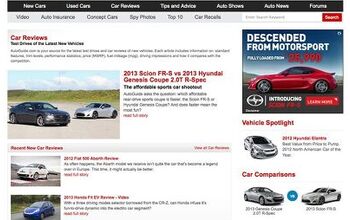

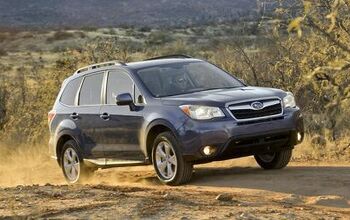
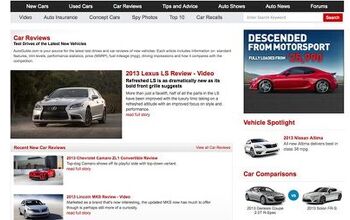
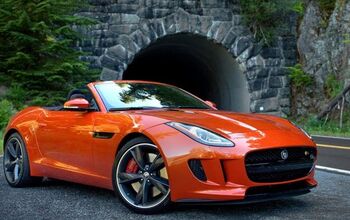
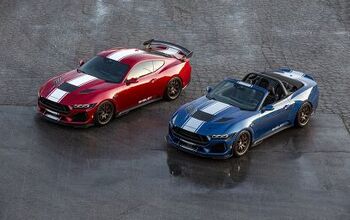
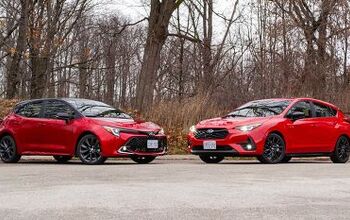
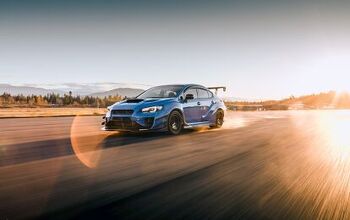


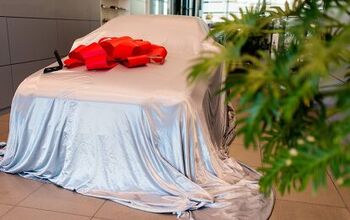
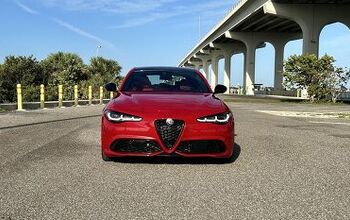
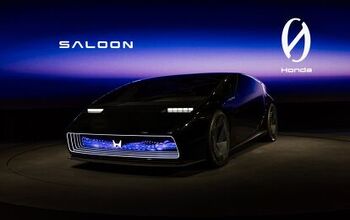



Comments
Join the conversation
They didn't mention the problem with the Forester's heater. It takes a long time to heat up.